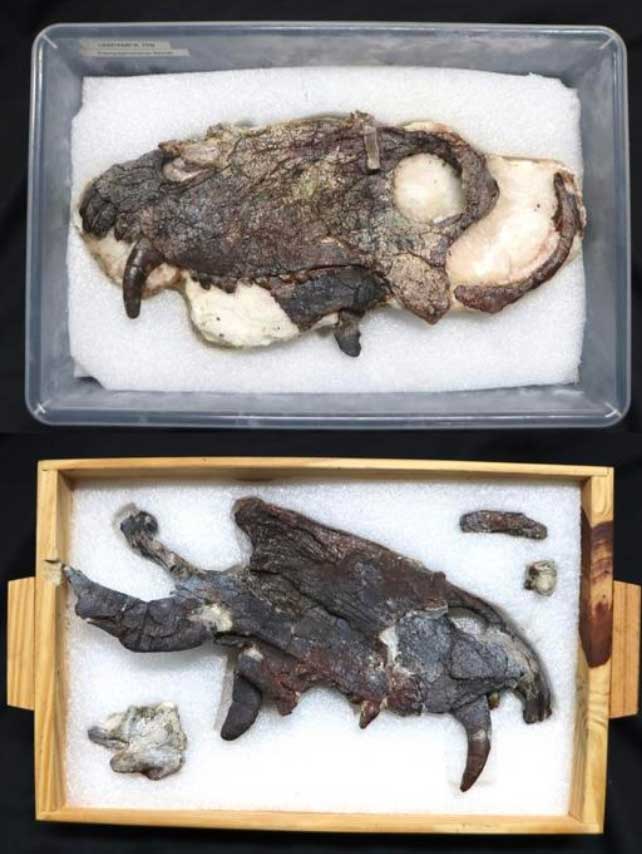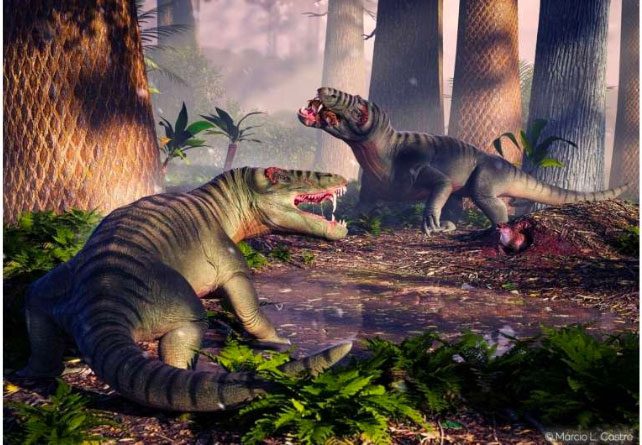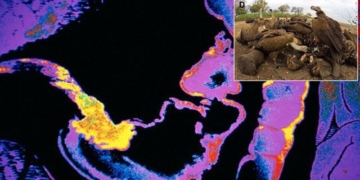“This creature is a monster with a spine-chilling appearance and surely instilled extreme fear in anything that crossed its path,” described a paleontologist from Harvard University.
An international team of scientists has unearthed a horrifying skull in southern Brazil, which has allowed them to recreate the portrait of one of the most terrifying monsters to ever walk the Earth, according to Science Alert.

Skull fragments of the monster in Brazil – (Photo: Zoological Journal of the Linnean Society)
The creature, described by paleontologist Stephanie Pierce from Harvard University as having a “spine-chilling” appearance, features a fossilized skull measuring up to 36 cm in length with menacing teeth.
It is a member of the species Pampaphoneus biccai, part of a group of large and fearsome terrestrial animals known as dinocephalia, which thrived before the age of dinosaurs.

The eerie appearance of the giant creature in the reconstruction – (Graphic: Márcio Castro)
The study on this monster, recently published in the scientific journal Zoological Journal of the Linnean Society, states that Pampaphoneus biccai could reach lengths of up to 3 meters, weighing around 400 kg, and it was undoubtedly a terrifying predator.
However, the skull recently discovered belonged to an even larger specimen than previously estimated.
Dating back to 265 million years ago, during the late Permian period, it predates dinosaurs by tens of millions of years.
Primitive dinosaurs only emerged slowly in the Triassic period afterward, before beginning to diversify in the Jurassic and reaching their peak during the Cretaceous.
This is a “goldmine” discovery, as despite being fearsome rulers, Pampaphoneus biccai and their contemporaneous monsters “vanished” from the Earth during the catastrophic mass extinction at the end of the Permian (Permian-Triassic extinction), which wiped out 96% of marine life and 70% of terrestrial vertebrates.
Thus, it serves as a rare and vivid evidence of a more mysterious “monster world” that existed long before the dinosaur era, providing insights into the structure of terrestrial ecosystems just before the largest mass extinction in history.


















































